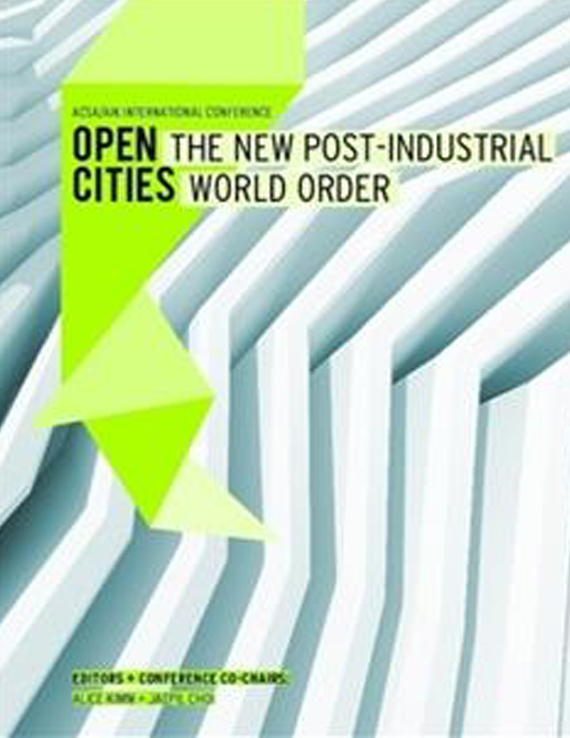Author(s): Jonathan Grinham, Kihong Ku & Susan Frostén
Open-Source Architecture is an emerging paradigm advocating peer-to-peer collectivity,inclusiveness and participatory culture in architectural design. These conditionssupport a resurgence of interest in responsive architecture, which has a foundation inthe prolific work done in the 70s, 80s and 90s in fields of computer science, productdesign, network and communications, by individuals including Weiser, Wiener, Ishii,and others. In the last decade, rich participatory, open-source communities, opensourcehardware, and open-source software, created by and designed for the fields ofalgorithmic design, visual programming, and physical computing have emerged withresulting opportunities for change in architectural education.Processing is an example of an open-source programming language particularlysignificant for its open and participatory character. It combines an open sourcesoftware platform with an online community that offers tutorials, code libraries,forums, and wiki pages. Arduino, open-source hardware, often involved in designingand prototyping kinetic and smart architecture – was developed on Processing.Arduino combines the use of off-the-shelf hardware and online community withusers contributing to and borrowing from their peers, thus providing a platformfor Do-It-Your Selfers (DIY), academics, and professionals around the world. Thefield of responsive architecture requires multidisciplinary collaboration amongstarchitects, engineers, programmers, behavioral scientists and other specialists.They can be members of these online communities, introducing a new educationallexicon of posting, googling, hacking and co-creating.In response, the authors conducted a study to explore the following pedagogicalquestions:• How is architectural education changing due to these innovations?• What are the related research skills and information literacy requirementsfor students?• What are the opportunities and challenges for architectural education?The three-stage study included:1. Literature review and mapping of open-source communities in digital design ;2. First-hand experiments with open-source hardware and software by the authorsthrough responsive architecture design projects;3. Responsive design studio course development and survey of student perceptions.The results from the study indicate that this pedagogical approach offers accessto low-level knowledge components, but requires careful integration with criticaland theoretical aspects of architecture. Open-source communities can produce aninformation overflow creating the ‘transparency problem’ – the inability for learnersto evaluate the legitimacy of new media they are consuming.Additionally, five points were derived as design process guidelines:1. Hacking: this notion contradicts its negative connotation and is used to ‘extendand develop the existing knowledge base’;2. Off-the-shelf: this approach encourages the use of online user-generatedsoftware libraries/source code or standardized off-the-shelf hardware by thedesigner, reducing the need for reinventing complex code or circuits for entrylevel users;3. Simulation: the use of parametric software and algorithms allow the designerto interact and evaluate design through virtual environments and translateto physical computing systems;4. Digital versioning: algorithmic design, digital fabrication allows evaluation ofplace sensitive design criteria facilitating mass customization of materiality, tectonicrelationships and intelligence;5. Interdisciplinary blind spot – architects are spatial consultants in the opensourcearchitecture paradigm but need to understand the capacity and synergiesof other disciplines in order to manipulate, edit and construct elements ofresponsive architecture.
Volume Editors
Alice Kimm & Jaepil Choi
ISBN
978-0-935502-91-6

 Study Architecture
Study Architecture  ProPEL
ProPEL 
